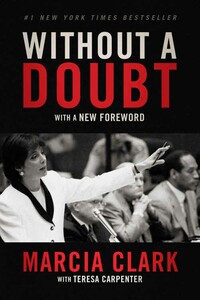When I finished writing this book in 1997, I couldn’t imagine that we would still be talking about the People v. Orenthal James Simpson nearly twenty years later. But really, no trial since then has been as heavily covered, as widely followed, or as intensely analyzed. Nor has any other case stirred up such a maelstrom of issues-race, celebrity, domestic violence, and the impact of media coverage on the criminal justice system.
With the benefit of time, both my views and the public discourse surrounding these issues have shifted: We have made progress in combating intimate partner violence, partially as a result of this case. Civil movements have learned to deploy visual recordings as powerful tools for justice. Video footage has in fact fueled the current national debate about police brutality against minorities. This in turn has opened Americans’ eyes to the role of race in many criminal cases, including the Simpson verdict.
Just two years before O. J. Simpson was charged with the murders of his ex-wife Nicole Brown and her friend Ron Goldman, an all-white jury acquitted LAPD officers who had been videotaped ruthlessly beating black taxi driver Rodney King. Long-simmering racial hostilities boiled over. The riots that erupted following the verdict have been characterized as the most violent of the twentieth century.
When I was assigned to the Simpson case, I had been prosecuting cases in downtown Los Angeles for ten years and was no stranger to the enduring racial divide in the criminal justice system. Even before the Rodney King trial, defense lawyers had often strategized around minority jurors’ wariness of the police. With tensions still running high in the wake of the uprising, my team and I were certain that race would play a part in the defense plan for Simpson. How, or to what extent, we didn’t know. But that did not remain a mystery for long: Just six weeks after the murders, Simpson’s attorneys publicly alleged that the bloody glove found at his Bel Air estate had been planted there by racist police officer Mark Fuhrman.
The assertion was preposterous. As I explain later in this book, it would have been impossible for Fuhrman to move the glove from the murder scene at Brown’s condominium on South Bundy Drive to Simpson’s home on North Rockingham Avenue two miles away. But the speed with which that claim gained traction and undermined the damning evidence of the glove, particularly within the African American community, was a bellwether of the degree to which race would play a part in the trial.












